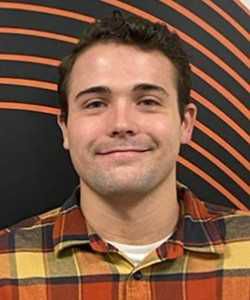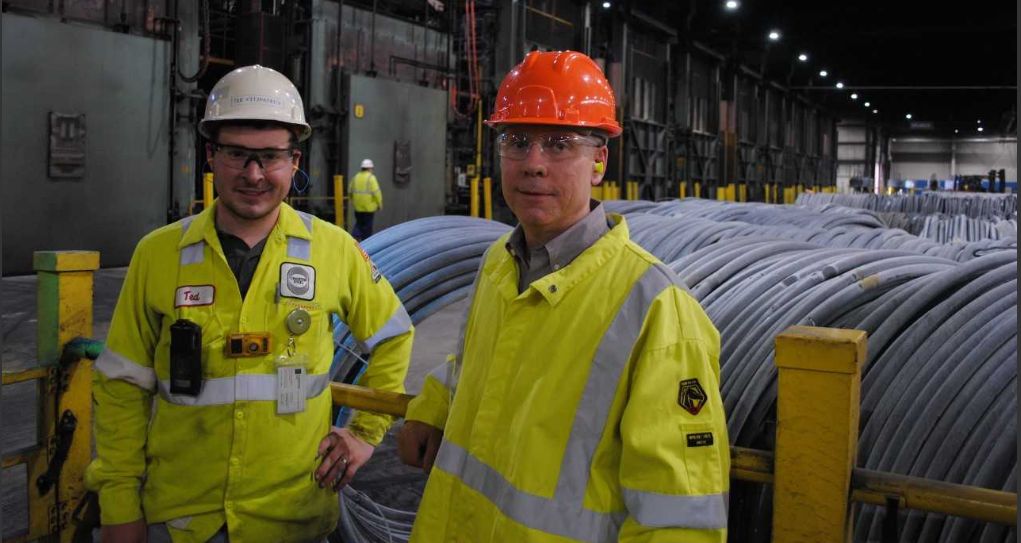Zachary Breider was nervous, anxious, and for good measure, overwhelmed.
He was an engineering student at UW-Milwaukee at the time and was tasked, along with three classmates, to solve a problem.
But this wasn’t just any problem.
This was a real-life problem brought to them by a Milwaukee-area company that was turning to a group of college students and asking them to unravel it.
“The projects that we bring in, we try to pick things that aren’t necessarily easy to solve,” said Ben Church, associate professor of materials and engineering at UWM. “And it’s not something that company is actively trying to do; like one of these questions they might want to work on, but they don’t really have time to work on.
“And the students can take these things and push them to a point where the engineers in industry might say, ‘Now, I know how to go about this. Now, I know the path forward.’ So, they’re kind of providing those directionality types of things.”
But Breider and Co. did one better. They not only solved it, but saved Charter Steel in Saukville $43,095 over a calendar year and counting.
“They really knocked it out of the park,” said Ted Fitzpatrick, a process metallurgist at Charter Steel who worked with the students. “It was a very successful and notable result.”
The assignment, as part of their capstone project, was to improve the heat treatment cycle of an anneal furnace at Charter. Over two semesters, the students first worked on theory and then, the project itself over 25 weeks.
“The way we set the projects up, we don’t tell the students what to do,” Church said. “We basically tell them what the problem is and we try to get them to ask questions and figure things out on their own. And so, that’s a new thing for them. They don’t really get a lot of exposure to those types of things.
And so, that gives a little bit of apprehension.”
Breider, though, said those feelings of uneasiness dissipated rather quickly.
“There was a lot involved in that problem,” he said. “There was a lot that we didn’t know. So yeah, it kind of felt like a big undertaking.
“But, I knew from the first meeting we had with Charter that they were going to be extremely welcoming, and that nervousness left my body. Throughout the meeting, and after it, we were all kind of reassured that the team is extremely welcome, and they just were excited to work with a group of college kids to hopefully tackle this problem.”
COVID made the process challenging, but throughout the course, the UWM team and Charter Steel engineers worked hand-in-hand, exchanging data back and forth, with the students conducting multiple experiments at the school.

When it was over, a process that used less time and energy, and fewer resources, was designed by the students that produced the same high-quality steel while maintaining its integrity. The students reduced Charter Steel's heat-treatment cycle time from 10 to four hours, saving it $631 every time it ran. In addition, the shorter time meant less wear and tear on the equipment, adding more savings.
“I was surprised that all it took was four students reviewing our process, running lab furnace trials to find an opportunity for us to better our process,” said Fitzpatrick. “And it was one of those head slappers, 'Like, how did we not identify this?' We’ve got an entire gang of metallurgists here and all it took was a group of students looking at something in a way that we hadn’t really considered before. I was very impressed with the success of that group.”
Church said most of the projects his students tackle are successful in terms of providing engineers that directionality information. But this one? This one was different.
“I would say only 10%, maybe 5% end up having such a direct, numerical and immediate cost savings that are really implemented quickly,” he said.
“That’s a real rare thing for us. I would say not just for us, that’s for senior design projects in general throughout the country.”
Fitzpatrick said the students’ solution is still being used today and noted there was an additional benefit aside from saving money.
“In these partnerships, if there’s special equipment that needs to get used, Charter has to pay some small amount of money for whatever time they use on that equipment,” he said. “But in this case, I think the only money we had to spend, I took everybody out to lunch, and it was like $72.13. In terms of bang for your buck, that was pretty good, I would say.
“Because 43 grand in savings in one year, and all Charter had to do was spend 72 bucks, that’s a pretty good return. And, you know, even better, we got a great new metallurgist out of that, too.”
Yes, Zachary Breider, the student initially full of anxiety and apprehension, today is an employee at Charter Steel.
Story idea? You can reach Mike Woods at 920-246-6321 or at: michael.t.woods1@charter.com



